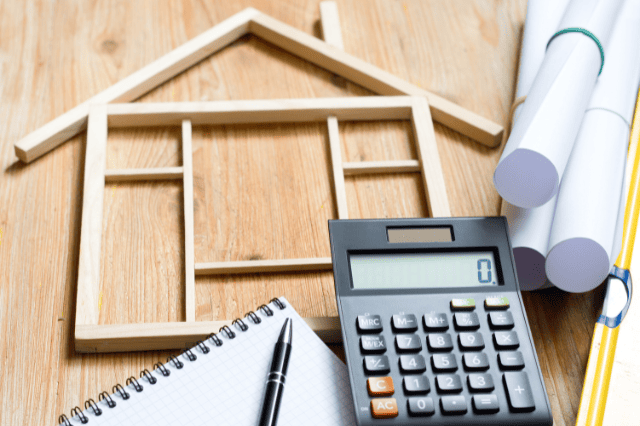Fixed rate mortgages guarantee a consistent interest rate over a set period, making them a popular choice for Australians who prefer consistent monthly payments. They provide predictability, allowing borrowers to manage their finances with confidence.
At Ausfirst Lending Group, we understand that selecting the right mortgage type can feel complex, especially with recent interest rate changes and economic developments. In this post, we’ll break down everything you need to know about fixed rate home loans, so you can decide if it’s right for you. Whether you’re securing your first home, expanding your property portfolio, or seeking stability in uncertain times, this guide will equip you with the information needed to make the right decisions.
Understanding Fixed Rate Mortgages
A fixed rate mortgage means your interest rate stays the same for a pre-determined period, typically between one and five years. During this time, your monthly repayments won’t change regardless of market changes, allowing for easier budgeting and financial planning.
This type of loan offers peace of mind for those wanting to avoid the uncertainty of market-driven rate changes. After the fixed period ends, you can choose to re-fix your rate or switch to a variable rate.
How Mortgage Interest Rates Are Linked with the Reserve Bank of Australia’s Cash Rate
The Reserve Bank of Australia (RBA) cash rate is the official interest rate that influences borrowing costs between financial institutions and serves as a benchmark for interest rates on loans, including home loans. The cash rate is adjusted to help control inflation and support economic stability, impacting both individuals and businesses.
When the RBA raises the cash rate, lenders typically increase their interest rates, leading to higher mortgage repayments. Conversely, a reduction in the cash rate often prompts lenders to lower interest rates, making borrowing more affordable. For existing fixed rate mortgages, the rate remains unchanged for the agreed term, though cash rate adjustments can impact new fixed loan offerings. Understanding this link can help you anticipate how broader economic changes could affect your borrowing choices at the end of a fixed term.
Pros and Cons of Fixed Rate Home Loans
Fixed rate mortgages offer a unique set of advantages and limitations, making them suitable for some borrowers but less ideal for others. Here’s a breakdown to help you decide if a fixed rate home loan aligns with your financial goals:
Pros of Fixed Rate Mortgages
- Predictability and Stability in Repayments: A fixed-rate loan shields you from future interest rate rises during the fixed period, ensuring steady monthly payments regardless of fluctuations in the RBA’s cash rate. For many borrowers, this predictability reduces financial stress, as you don’t have to worry about potential interest rate hikes.
- Simplified Financial Planning: Fixed rates for home loans allow you to project future expenses confidently without adjusting to frequent rate changes, which may be required with a variable rate loan. Knowing your monthly outgoings helps you allocate funds toward savings, investments, or other financial priorities, creating a more secure financial situation.
Cons of Fixed Rate Mortgages
- Missed Opportunities if Rates Fall: If market rates drop during your fixed term, you won’t benefit from lower repayments, as your rate remains locked in. This inflexibility can be frustrating, especially if the RBA significantly lowers the cash rate after you secure a fixed loan. This is a key consideration if you want the option to adjust to favourable market changes.
- Limited Flexibility with Extra Repayments: Fixed rate mortgages often come with restrictions on making additional repayments, limiting your ability to pay down your loan faster. While some fixed home loans may allow small additional payments, many lenders cap the amounts or charge fees beyond a set limit.
- Break Fees for Early Exit: If you decide to switch or refinance your loan before the fixed term ends, most lenders will charge a break fee, which can be costly. These fees – designed to cover the lender’s loss for the remainder of the fixed term – can add up quickly depending on the market rate difference. If you anticipate needing flexibility in the future, a fixed rate may not be the best option.
- Fewer Loan Features: Fixed rate products often restrict access to features like offset accounts or redraw facilities, which are more commonly available in variable rate loans. While some lenders offer fixed rate home loans in Australia with partial offset options, full access is usually limited. Borrowers who prefer flexible loan features to manage their repayments may find fixed rates less accommodating.
When Is a Fixed Rate Mortgage Right for You?
Before committing to a fixed rate option, consider your financial priorities, risk tolerance, and future plans. Below are some scenarios where a fixed rate mortgage might suit you best. You can also consult a mortgage broker to guide you in your decision-making.
You Prefer Consistent Monthly Repayments
If you value knowing exactly how much you’ll pay each month, fixed home loan rates provide this consistency, making it easier to plan your finances. This predictability is particularly beneficial for first-time buyers or families who want stable outgoings and fewer financial surprises.
You’re Comfortable with Limited Flexibility
As discussed in the previous section, fixed rate home loans often come with restrictions on making extra repayments and may include early exit fees if you refinance before the term ends. If you don’t plan on making substantial extra repayments or switching loans soon, these limitations may not impact you significantly.
You’re Looking to Set a Medium-Term Financial Plan
If your income is consistent and you’re aiming for a steady repayment structure, a fixed rate can support your financial strategy. This approach suits borrowers who are less concerned with taking advantage of rate dips and are focused on long-term financial security. When the fixed term ends, you can then assess whether to renew the fixed rate or switch to a variable option based on the market conditions at that time.
You’re a Property Investor Seeking a Stable Cash Flow
Many property investors opt for fixed home loan interest rates to ensure stable cash flow. Knowing your exact repayment amount helps in planning rental yields and managing expenses associated with property ownership. With current competitive rates available for investors, fixed rate loans can provide you a secure financial base for building a property portfolio. However, make sure to consider your long-term strategy, as break fees may apply if you need to exit the loan early.
You Want to Lock in a Low Interest Rate
When interest rates are low, securing a fixed rate can be a smart way to capitalise on these favourable conditions. By locking in a low rate, you protect yourself from potential rate increases in the future, keeping your repayments lower than they might be with a variable rate. Taking advantage of low rates with a fixed loan can lead to substantial savings in the long run.
When Will the Interest Rate Go Down?
Now, you might be wondering when the interest rate will go down. Recently, several lenders have begun lowering their fixed home loan rates in Australia, which is a strong indication that interest rates may soon decline.
For example, one of our partner lenders is now offering a two-year fixed rate at 5.74%, combined with a unique product that includes a 100% offset account. This flexible option allows borrowers to make additional payments and enjoy the benefits of an offset account, even during the fixed rate period. What sets this product apart is that it provides unlimited withdrawal access, offering unprecedented flexibility and financial control during the fixed rate term.
Alternative Loan Options to Consider
While fixed-rate mortgages provide predictability, other loan types might better suit your needs if you want flexibility or have unique financial requirements. Here are a few options to consider:
Variable Rate Mortgages
If you’re comfortable with fluctuating monthly repayments, a variable rate mortgage might be suitable. Variable rates change with market conditions, which means you could benefit from lower rates if the Reserve Bank of Australia reduces the cash rate, though you also face the possibility of rate increases.
Loans with an Offset Account Feature
Some loans, particularly variable rate loans, offer an offset account feature. An offset account is a bank account connected to your home loan, where the balance helps lower the loan amount used to calculate interest. This feature can help you save on interest payments over time without changing your loan structure.
Bridging Loans
If you’re purchasing a new property before selling your current home, you can consider a bridging loan as a short-term solution. Bridging loans typically come with higher, variable interest rates and are designed to offer temporary financing for managing property transitions. Though they can be more costly, bridging loans provide valuable liquidity during the buying and selling period.
Conclusion
With a fixed interest rate, you gain protection from rate hikes on your mortgage, even as market conditions shift. Nevertheless, carefully consider this option’s benefits and limitations to ensure it suits your financial goals and lifestyle.
If you’re exploring a fixed rate home loan or want to understand the best options for your situation, the team at Ausfirst Lending Group is here to guide you. Reach out today to get expert advice and find a loan that aligns with your needs.



